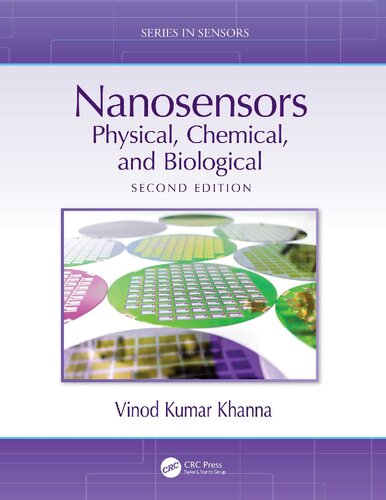

Most ebook files are in PDF format, so you can easily read them using various software such as Foxit Reader or directly on the Google Chrome browser.
Some ebook files are released by publishers in other formats such as .awz, .mobi, .epub, .fb2, etc. You may need to install specific software to read these formats on mobile/PC, such as Calibre.
Please read the tutorial at this link. https://ebooknice.com/page/post?id=faq
We offer FREE conversion to the popular formats you request; however, this may take some time. Therefore, right after payment, please email us, and we will try to provide the service as quickly as possible.
For some exceptional file formats or broken links (if any), please refrain from opening any disputes. Instead, email us first, and we will try to assist within a maximum of 6 hours.
EbookNice Team

Status:
Available4.4
36 reviewsNanosensors are innovative devices thatexploit the unique properties exhibited by matter at the nanoscale. A growing and exciting field, nanosensors have recently spurred considerable research endeavors across the globe, driving a need for the development of new device concepts and engineering nanostructured materials with controlled properties. Nanosensors: Physical, Chemical, and Biological, Second Edition offers a panoramic view of the field and related nanotechnologies with extraordinary clarity and depth.
Presenting an interdisciplinary approach, blending physics, chemistry and biology, this new edition is broad in scope and organised into six parts; beginning with the fundamentals before moving onto nanomaterials and nanofabrication technologies in the second part. The third and fourth parts provide a critical appraisal of physical nanosensors, and explore the chemical and biological categories of nanosensors. The fifth part sheds light on the emerging applications of nanosensors in the sectors of society, industry, and defense and details the cutting-edge applications of state-of-the-art nanosensors in environmental science, food technology, medical diagnostics, and biotechnology. The final part addresses self-powering and networking issues of nanosensors, and provides glimpses of future trends.
This is an ideal reference for researchers and industry professionals engaged in the frontier areas of material science and semiconductor fabrication as well as graduate students in physics and engineering pursuing electrical engineering and electronics courses with a focus on nanoscience and nanotechnology.
Key features: